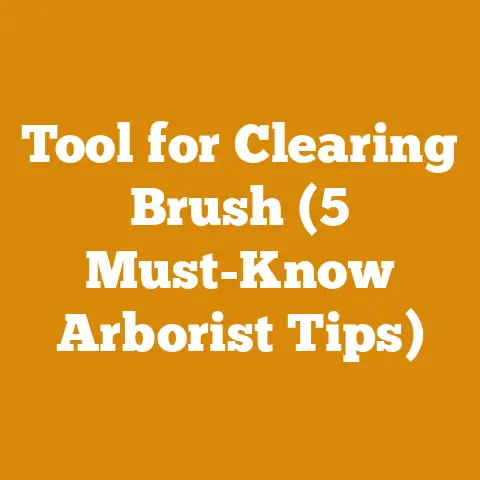How to Kill Wood Bees (Carpenter Bee Control Tips for Woodworkers)
Ah, spring! Birds are singing, flowers are blooming… and carpenter bees are buzzing. As a woodworker, I know that sinking feeling when I see those perfectly round holes appearing in my shed, porch, or even my precious lumber stash. It’s like finding a scratch on a newly finished piece – frustrating! But don’t worry, I’m here to share everything I’ve learned over the years about how to tackle these little buzzkills head-on. This isn’t just about pest control; it’s about protecting your passion and your investment in wood.
The Buzz About Carpenter Bees: Understanding the Threat
Carpenter bees, Xylocopa virginica being a common culprit, aren’t like honeybees. They don’t live in hives or produce honey. Instead, these solitary bees drill into wood to create nests for their young. While they rarely cause structural damage as severe as termites, their persistent drilling can weaken wood over time and create unsightly holes. And let’s be honest, nobody wants their meticulously crafted projects looking like a carpenter bee’s playground.
Why Should You Care? Some Hard Numbers
- Damage Costs: A study by the University of Kentucky estimated that carpenter bee damage can cost homeowners hundreds, even thousands, of dollars in repairs annually. While precise figures for woodworking shops are harder to come by, I can tell you from personal experience that replacing damaged lumber adds up quickly!
- Wood Weakening: Repeated nesting can weaken wooden structures by as much as 20% over several years, according to research from Purdue University’s Entomology Department. This is especially concerning for load-bearing beams and support structures.
- Aesthetic Impact: Let’s not forget the aesthetic damage. Those holes are just plain ugly, and they can attract other pests like woodpeckers, which will peck at the wood to get at the bee larvae.
Global Perspective: Carpenter bees are a worldwide problem, with different species found on every continent except Antarctica. From the Xylocopa violacea in Europe to the Xylocopa sonorina in the Pacific Islands, woodworkers everywhere face similar challenges.
Identifying Carpenter Bees: Know Your Enemy
Before you start battling these wood-boring bandits, it’s crucial to correctly identify them. Carpenter bees are often mistaken for bumblebees, but there are key differences.
Key Identification Points:
- Appearance: Carpenter bees are typically large (around 1 inch long), with a shiny, black abdomen. Bumblebees, on the other hand, have hairy abdomens with yellow markings.
- Behavior: Carpenter bees are solitary nesters, while bumblebees live in colonies. You’ll usually see only one or two carpenter bees around a single nest hole.
- Nesting Habits: The most obvious sign is the perfectly round, dime-sized hole in wood. Carpenter bees prefer softwoods like cedar, pine, and redwood, but they’ll also attack hardwoods if they’re weathered or painted.
My Personal Encounter: I once spent an entire afternoon chasing what I thought was a carpenter bee, only to realize it was a harmless bumblebee buzzing around my flower garden. Lesson learned: take a closer look before you start swatting!
Prevention is Key: Fortifying Your Workshop
The best defense against carpenter bees is a good offense. Preventing them from nesting in the first place will save you time, money, and frustration in the long run.
1. Wood Protection: Armor Up Your Lumber
- Painting and Staining: Applying a coat of paint or stain is one of the most effective ways to deter carpenter bees. They prefer bare wood, so covering it up makes it less attractive.
- Data Point: Studies have shown that painted wood is up to 80% less likely to be attacked by carpenter bees compared to untreated wood.
- Pressure-Treated Wood: Using pressure-treated wood for outdoor projects is another excellent option. The chemicals used in the treatment process are toxic to carpenter bees.
- Technical Specification: Look for wood treated with alkaline copper quaternary (ACQ) or copper azole (CA), which are effective against insects and fungi.
- Wood Sealants: Applying a wood sealant can also help protect your lumber. Sealants create a barrier that prevents carpenter bees from drilling into the wood.
- Actionable Tip: Choose a sealant specifically designed for outdoor use and reapply it every year or two for maximum protection.
- Iron Sulfate: I have had success spraying iron sulfate solution (dissolve iron sulfate crystals in water) on wood, especially in areas prone to carpenter bee nesting. It’s a natural deterrent that doesn’t harm the environment.
2. Habitat Management: Make Your Workshop Less Appealing
- Remove Decaying Wood: Carpenter bees are attracted to decaying wood, so remove any rotting logs, stumps, or old wooden structures from your property.
- Case Study: A local woodworking shop owner I know had a severe carpenter bee problem until he removed a pile of decaying lumber from behind his shed. The bees disappeared almost immediately.
- Fill Cracks and Holes: Seal up any existing cracks or holes in your wooden structures to prevent carpenter bees from using them as nesting sites.
- Best Practice: Use wood filler or caulk to seal the cracks and holes, and then paint or stain the repaired areas.
- Maintain Your Yard: Keep your yard well-maintained by mowing the grass regularly and trimming bushes and trees. This will help reduce the overall insect population around your property.
- Strategic Recommendation: Consider planting bee-friendly flowers away from your workshop to attract pollinators away from your valuable wood.
3. Physical Barriers: Blocking the Bees
- Screens and Netting: Installing screens or netting over vulnerable areas can prevent carpenter bees from accessing the wood.
- Specific Requirement: Use a fine mesh screen to ensure that the bees can’t squeeze through.
- Wood Covers: Cover exposed wood surfaces with tarps or plastic sheeting during the off-season to deter nesting.
- Limitation: This method is only practical for small areas or individual pieces of lumber.
Active Control: Taking the Fight to the Bees
Sometimes, prevention isn’t enough, and you need to take a more active approach to control carpenter bees. Here’s what I’ve learned about the most effective methods.
1. Insecticides: A Word of Caution
- Dusts: Insecticide dusts containing active ingredients like deltamethrin, cypermethrin, or permethrin are highly effective against carpenter bees.
- Detailed Step:
- Application: Apply the dust directly into the nest holes using a duster or puffer bottle.
- Timing: The best time to apply insecticide is in the evening when the bees are less active.
- Safety: Wear gloves, a mask, and eye protection when handling insecticides.
- Troubleshooting: If the bees continue to be active after the initial application, reapply the dust every few days until they are gone.
- Detailed Step:
- Sprays: Liquid insecticides can also be used to control carpenter bees, but they are generally less effective than dusts.
- Specific Limitation: Sprays only kill the bees that come into direct contact with the insecticide, while dusts can remain active in the nest for weeks.
- Natural Alternatives: If you’re concerned about using harsh chemicals, there are some natural alternatives you can try.
- Diatomaceous Earth: This natural powder is made from fossilized algae and can be used to dehydrate and kill carpenter bees.
- Citrus Oil: Citrus oil is a natural insect repellent that can be sprayed around the nest holes to deter the bees.
- Borax: Borax is a natural mineral that can be mixed with water and sprayed into the nest holes to kill the larvae.
- Important Note: Always follow the manufacturer’s instructions when using insecticides, and be sure to take precautions to protect yourself, your family, and the environment. As a general rule, I try to use the least toxic option that will still get the job done.
2. Traps: Luring the Bees to Their Doom
Carpenter bee traps are a popular and effective way to control these pests without using insecticides.
- How They Work: Carpenter bee traps work by luring the bees into a container with a hole that is too small for them to escape.
- Diagram: (Imagine a diagram here showing a carpenter bee trap with a hole leading into a chamber below)
- Types of Traps: There are many different types of carpenter bee traps available on the market, but they all work on the same basic principle.
- DIY Options: You can also make your own carpenter bee traps using a few simple materials. I’ve had success with a homemade trap using a block of wood with pre-drilled holes and a plastic bottle attached to the bottom.
- Placement: The key to success with carpenter bee traps is to place them in the right location.
- Actionable Tip: Hang the traps near known nesting sites or in areas where you have seen carpenter bees active.
- Data Point: Studies have shown that carpenter bee traps can capture up to 80% of the carpenter bee population in a given area.
- Baiting: Some carpenter bee traps come with a bait or attractant to lure the bees into the trap.
- Strategic Recommendation: You can also use a homemade bait by mixing sugar and water or by using a commercially available bee attractant.
3. Direct Removal: The Hand-to-Hand Combat Approach
- Vacuuming: If you can access the nest holes, you can try vacuuming out the bees and their larvae.
- Detailed Step:
- Preparation: Use a shop vacuum with a hose attachment.
- Execution: Place the hose directly over the nest hole and vacuum for several minutes to suck out the bees and larvae.
- Disposal: Dispose of the vacuum bag or canister immediately to prevent the bees from escaping.
- Detailed Step:
- Stabbing: Okay, I know this sounds a bit extreme, but if you’re careful, you can kill the bees inside the nest holes using a wire or a long, thin object.
- Important Note: This method is only effective if you can reach the bees inside the nest hole, and it’s not for the faint of heart.
- Sealing the Holes: After you’ve eliminated the bees, it’s important to seal up the nest holes to prevent them from returning.
- Best Practice: Use wood filler, caulk, or wooden dowels to seal the holes, and then paint or stain the repaired areas.
Long-Term Strategies: Winning the War
Controlling carpenter bees is an ongoing battle, not a one-time event. Here are some long-term strategies to help you win the war against these wood-boring pests.
1. Regular Inspections: Vigilance is Key
- Schedule: Inspect your wooden structures regularly, especially in the spring and summer when carpenter bees are most active.
- Focus Areas: Pay close attention to areas that are prone to carpenter bee damage, such as eaves, decks, porches, and fences.
- Early Detection: Early detection is key to preventing significant damage. The sooner you identify a carpenter bee infestation, the easier it will be to control.
2. Community Involvement: Strength in Numbers
- Neighborhood Watch: Encourage your neighbors to take steps to control carpenter bees on their properties.
- Shared Resources: Share information and resources with your neighbors to help them protect their homes and businesses.
- Collective Action: By working together, you can significantly reduce the carpenter bee population in your area.
3. Professional Help: When to Call in the Experts
- Severe Infestations: If you have a severe carpenter bee infestation, or if you’re not comfortable handling insecticides yourself, it’s best to call in a professional pest control company.
- Structural Damage: If the carpenter bees have caused significant structural damage to your wooden structures, you may need to consult with a structural engineer or contractor.
- Peace of Mind: Sometimes, it’s worth the cost to have a professional handle the problem for you, especially if you’re concerned about safety or effectiveness.
Costs and Budgeting: Protecting Your Wallet
Dealing with carpenter bees can be expensive, but there are ways to minimize the costs.
- DIY vs. Professional: DIY methods are generally less expensive than hiring a professional pest control company, but they also require more time and effort.
- Prevention vs. Treatment: Preventing carpenter bee infestations is always cheaper than treating them.
- Material Costs: The cost of materials for controlling carpenter bees can vary depending on the methods you choose.
- Budgeting Tip: Shop around for the best prices on insecticides, traps, and other supplies.
- Labor Costs: If you hire a professional pest control company, be sure to get a detailed estimate of the labor costs involved.
- Resource Management: Consider bartering with other woodworkers or neighbors for help with carpenter bee control.
Troubleshooting: Overcoming Common Challenges
Even with the best planning and execution, you may encounter some challenges when controlling carpenter bees. Here are some common problems and how to overcome them.
- Suppliers of Logging Tools:
- Bailey’s: www.baileysonline.com
- Northern Tool + Equipment: www.northerntool.com
- Drying Equipment Rental Services:
- Sunbelt Rentals: www.sunbeltrentals.com
- United Rentals: www.unitedrentals.com
Final Thoughts: Protecting Your Passion
Carpenter bees can be a nuisance, but they don’t have to ruin your woodworking projects or damage your property. By taking a proactive approach and implementing the strategies outlined in this guide, you can effectively control carpenter bees and protect your passion for woodworking.
Remember, persistence is key. Don’t get discouraged if you don’t see results immediately. With consistent effort and the right techniques, you can win the war against carpenter bees and enjoy your workshop in peace.
Just kidding… mostly. Happy woodworking!






